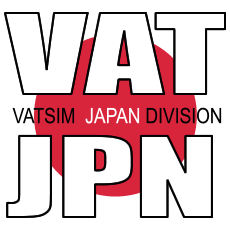LOA VATJPN / Anchorage ARTCC
VATJPNとAnchorage ARTCC間の管制業務に関する合意内容を下記に記しますので、VATJPN管制官はこのLOAに定められた手順を遵守してください。
The following common procedures are defined for operations between Anchorage Radio and Tokyo Radio.
The following minimum separation standards shall be maintained for aircraft transiting the common border.
Vertical: 1000ft
Lateral: 30NM
Tokyo to Anchorage Operations
Aircraft transiting the Tokyo/Anchorage boundary eastbound shall be routed via one of the following entry routes.
PASRO (A590)
AKISU (R591)
CUTEE (G344)
Tokyo shall as soon as practical after receiving an ETC from the aircraft transfer the following information to Anchorage:
Aircraft call sign, entry fix, ETC for fix, altitude, and speed in Mach.
Anchorage will then determine whether the aircraft can safely enter at the expected time and speed, or advise Tokyo if other instructions are necessary.
In the event Anchorage cannot accommodate the aircraft due to traffic and/or separation concerns Tokyo shall be responsible for maintaining control of the aircraft and ensuring that a breach of airspace does not occur until such time as Anchorage is able to accept control of the aircraft (usually accomplished via an “entry” time.
Anchorage to Tokyo
Aircraft transiting the Anchorage/Tokyo boundary westbound shall be routed via one of the following exit routes.
NIPPI (R220)
OMOTO (R580)
AKISU (R591)
CUTEE (G344)
Anchorage shall as soon as practical after receiving an ETC from the aircraft transfer the following information to Tokyo:
aircraft callsign, exit fix, ETC for fix, altitude, and speed in Mach.
Tokyo will then determine whether the aircraft can safely enter at the expected time and speed or advise Anchorage if additional restrictions are necessary.
In the event Tokyo cannot accommodate the aircraft due to traffic and/or separation concerns Anchorage shall be responsible for maintaining control of the aircraft and ensuring that a breach of airspace does not occur until such time as Tokyo is able to accept control of the aircraft (usually accomplished via an”entry” time.
In the event that a situation occurs that is not covered by this agreement is shall be the responsibility of the controllers to resolve the matter in a mutually acceptable way. The guiding document for FSS shall be FAA Order 7110.65.
Authorized 1-Oct-2011
Kenneth Haught, Anchorage Air Traffic Manager
Keisuke Yamane, VATSIM Japan Division Director


